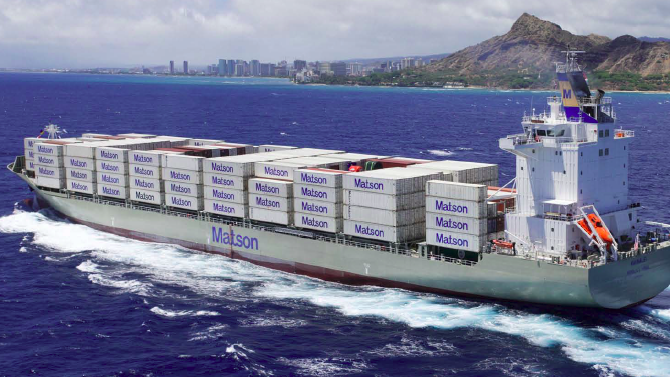MARAD and USCG Defend Jones Act in Congressional Hearing

On Tuesday, in a hearing of the House Coast Guard and Maritime Transportation Subcommittee, congressional representatives called for increased funding for the U.S. Coast Guard's acquisition needs and questioned administrators on the status of America's merchant fleet.
Committee Chairman Rep. Duncan Hunter (R-CA) opened the meeting with criticism of the proposed FY 2017 budget for the Coast Guard, which he described as underfunded, about $1 billion below the level necessary for acquisitions. He warned that this could "degrade mission effectiveness" for the USCG and end up costing taxpayers more in the long term.
The budget as submitted includes $700 million for Coast Guard surface asset recapitalization and sustainment, including acquisition costs for the National Security Cutter, the Fast Response Cutter and the Offshore Patrol Cutter.
USCG Commandant Adm. Paul Zukunft did not address the funding level in the administration's proposal, but he reminded the panel that the service had top priority acquisition needs ahead, including the Fast Response Cutter and the Offshore Patrol Cutter. He also noted that the USCG has only one functioning heavy icebreaker left, the Polar Star. She is the only remaining government vessel capable of performing a break-in mission to McMurdo Station, an American research outpost and logistics hub in Antarctica. He said that he is "pleased the President’s Budget includes $150 million to accelerate the acquisition of a new heavy polar icebreaker,” and warned that the service estimates the forty-year-old Star has only seven years of useful service life left.
In previous years, the NSF has been forced to charter Russian icebreakers for this task. Multiple U.S. Antarctic stations are dependent on the shipments to McMurdo for resupply.
The panel asked him about the status of the Star's disabled sister ship Polar Sea; he said that "we have pulled the Polar Sea out of the water to do a material assessment on the ship," with a report due this summer to provide "a floor- maybe not a ceiling, but a floor" for the cost of her reactivation. But he suggested that the prospects for her reuse are limited. "Let's be honest, how many more years can you get out of a 40 year old ship, and for how much," he said, emphasizing that it would come down to a business decision. If she is to be reactivated, he said that it would require "some top line relief," meaning additional funding.
All present spoke in defense of the Jones Act, America's cabotage law. Admiral Zukunft emphasized the quality of new LNG-fueled container ships being built for TOTE by American yard General Dynamics NASSCO, and said that that capacity would be lost without the Jones Act. “If you take the Jones act away, the first thing that goes away is these shipyards, and what goes behind that are the mariners . . . If we don't have a U.S. fleet, if we don't have U.S. shipyards to constitute that fleet, as we look at how did the United states prevail in wars past, it really began with our industrial base . . . I am concerned that any repeal of [the Jones Act] would really cut at the heart of that industrial base."
He added that port state control inspections show that "every day we detain 2-3 ships that arrive in the United States" for deficiencies, even though foreign flag states "uphold that they are [compliant]." For safety and security, he said, "no one does it better than the United States."
Maritime Administrator Chip Jaenichen estimated upwards of 40 ships being built in the U.S. now, creating 110,000 jobs and sustaining a $36 billion industry. "Without the Jones Act, those builds don't happen," he said. "Without that commercial shipbuilding and that industrial base, it will have an impact on the taxpayer," increasing the cost of vessels acquired for NOAA, the USCG, the Navy and the Corps of Engineers.
Ranking member Rep. John Garamendi (D-CA) concurred with Rep. Hunter's call for more acquisition, maintenance and operating funding for the USCG. He also suggested the full restoration of the monetized food aid program Food for Peace, under which American agricultural products are provided to NGOs at no cost or low cost, then shipped aboard U.S.-flagged vessels and resold in nations afflicted by famine or natural disaster.
The Obama administration negotiated a partial reallocation of Food for Peace funds starting in FY2014; Jaenichen said that the resultant drop in U.S.-flag shipments had cost the American merchant fleet about four to six ships, primarily bulkers.
But beyond the loss of the U.S.-flagged vessels themselves, he is concerned that if the domestic fleet should shrink by another four to six ships, the number of working American merchant mariners would be at a critical level – below the number required in the event of national emergency.
Food for Peace is controversial; USAID says that the $1.5 billion program, known as Title II, is 20-30 percent more expensive than funding local food purchases in the affected countries; critics, including former USAID administrator Andrew S. Natsios, also allege that the long global supply chain means delivery may arrive too late for emergency famine relief.
The industry association American Maritime Congress has long defended Title II. “By purchasing U.S. grown commodities and shipping the cargo on U.S.-flag vessels, we are able to accomplish the goals of providing stable food supplies for developing countries while also benefiting our own economy and ensuring the seafarer and ship base necessary for our national and homeland security,” the AMC says.
